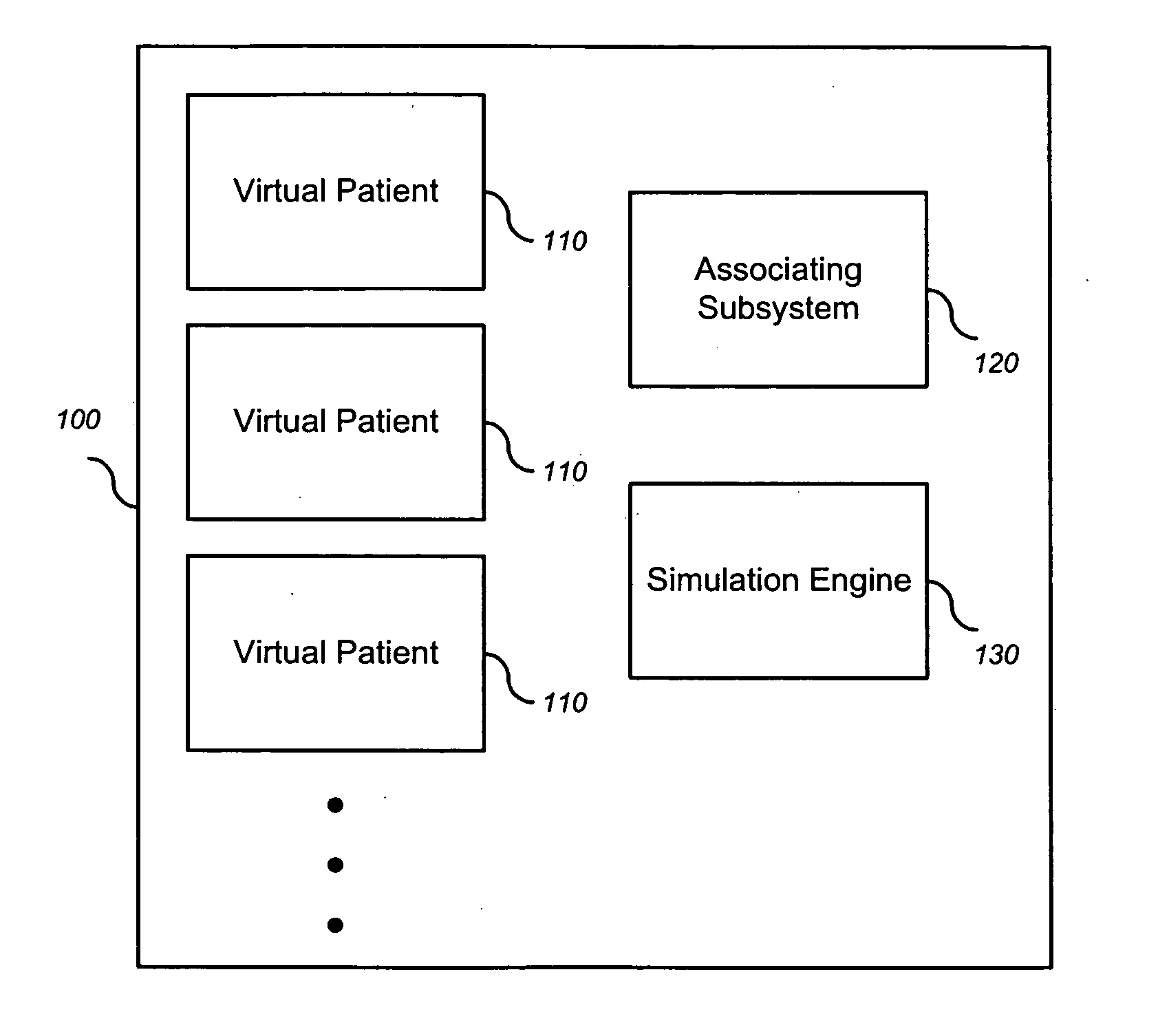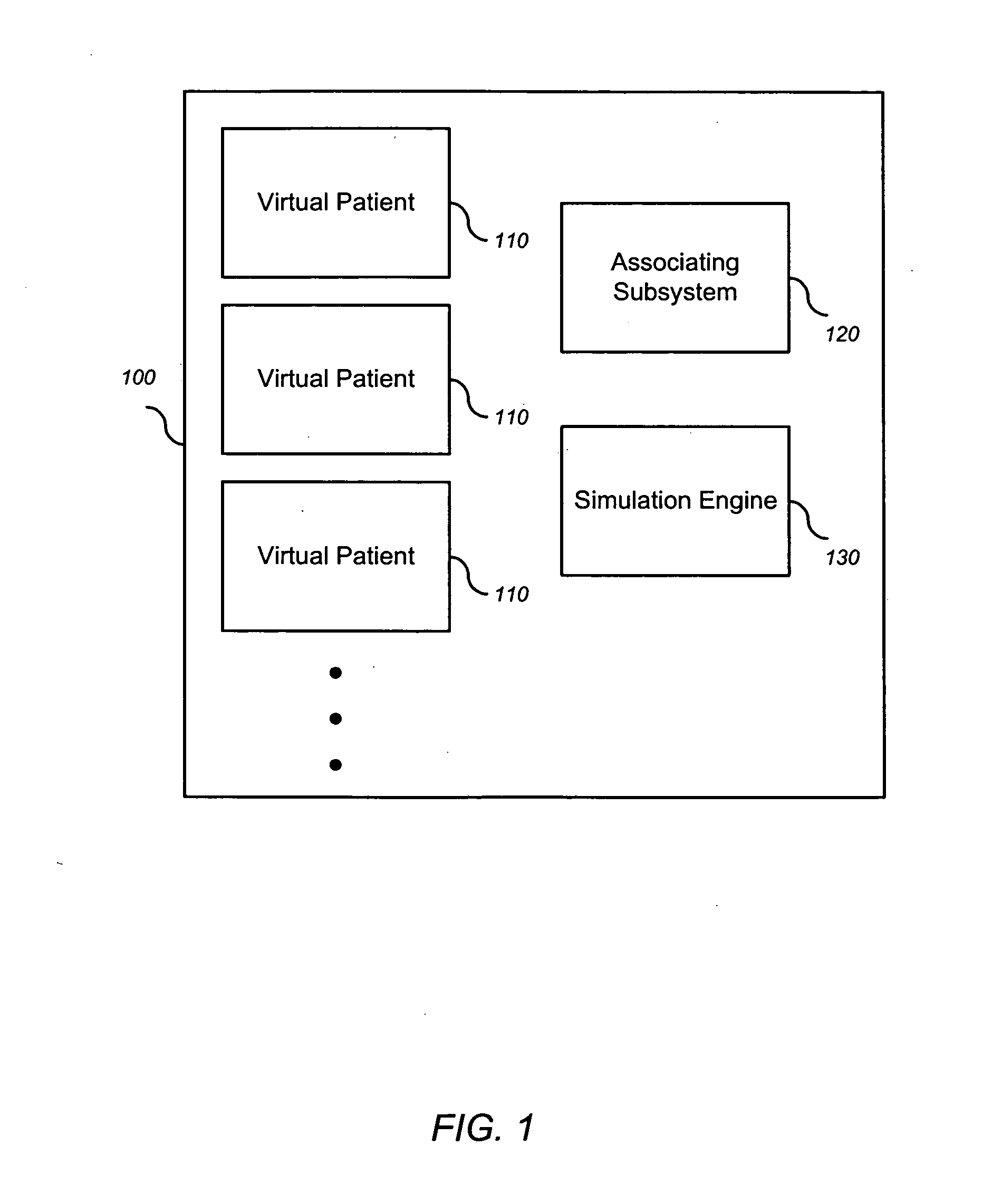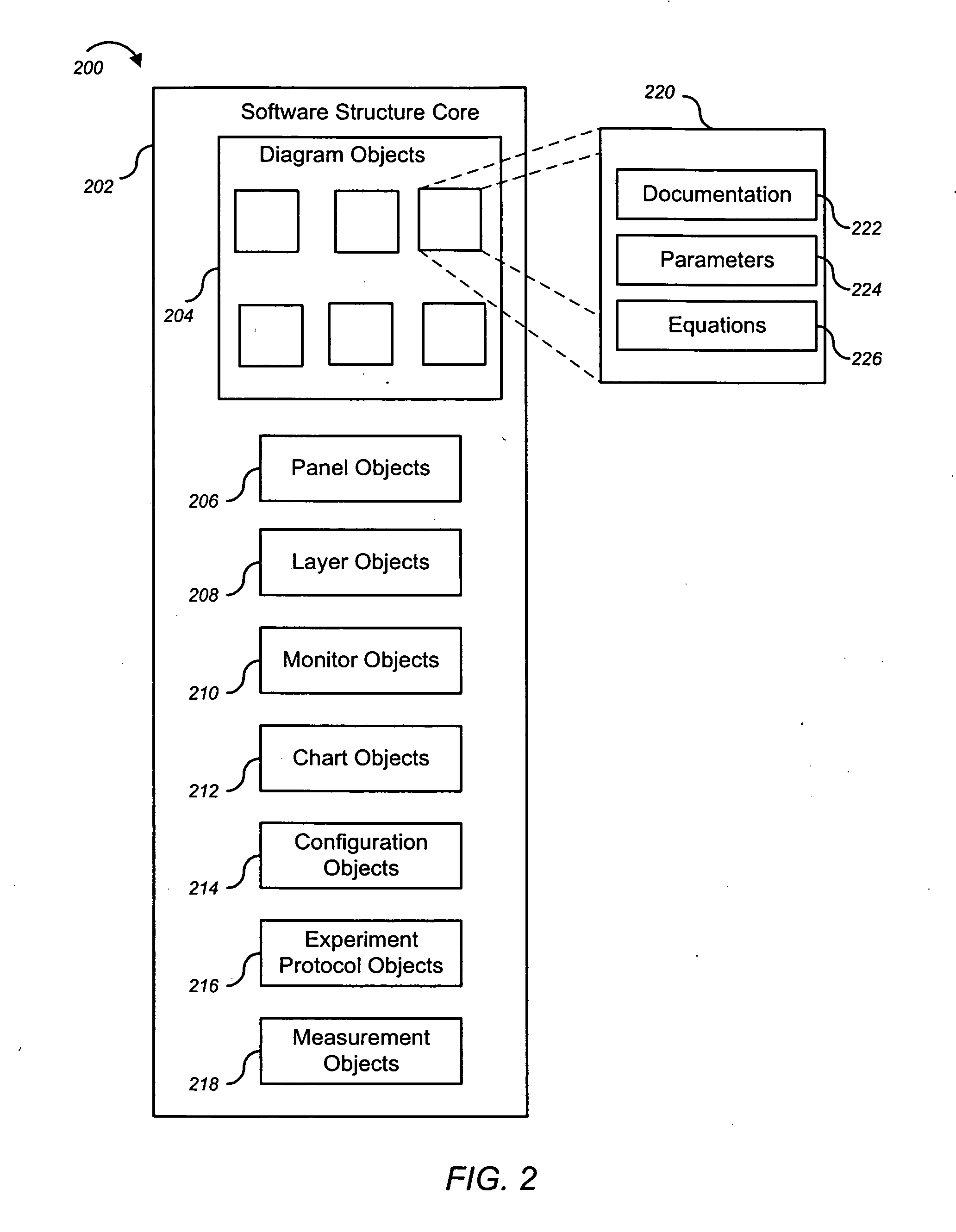Simulating patient-specific outcomes
a patient-specific outcome and simulation technology, applied in the field of can solve the problems of limited application of most clinical decision support systems, inability of individuals to review, understand and apply new information, and inability to provide a mechanism to evaluate interventions in real individuals. , to achieve the effect of simple passage of tim
- Summary
- Abstract
- Description
- Claims
- Application Information
AI Technical Summary
Benefits of technology
Problems solved by technology
Method used
Image
Examples
Embodiment Construction
A. Overview
[0021] The invention encompasses systems, methods, and apparatus for predicting and monitoring an individual's response to a therapeutic regimen. The invention includes multiple virtual patients, an associating subsystem operable to associate the subject with one or more of the virtual patients, and a simulation engine operable to apply one or more experimental protocols to the one or more virtual patients identified with the subject to generate a set of outputs. The set of outputs can represent therapeutic efficacy, identify biomarkers for monitoring therapeutic efficacy, or merely report the status of the biological system as it represents a particular individual.
B. Definitions
[0022] The term “mechanistic model,” as used herein, refers to a model comprising a set of differential equations used to describe the dynamic behavior of a process and its characteristics. Mechanistic models include causal models, . This goes beyond a causal model which typically links two or ...
PUM
 Login to View More
Login to View More Abstract
Description
Claims
Application Information
 Login to View More
Login to View More - R&D
- Intellectual Property
- Life Sciences
- Materials
- Tech Scout
- Unparalleled Data Quality
- Higher Quality Content
- 60% Fewer Hallucinations
Browse by: Latest US Patents, China's latest patents, Technical Efficacy Thesaurus, Application Domain, Technology Topic, Popular Technical Reports.
© 2025 PatSnap. All rights reserved.Legal|Privacy policy|Modern Slavery Act Transparency Statement|Sitemap|About US| Contact US: help@patsnap.com



